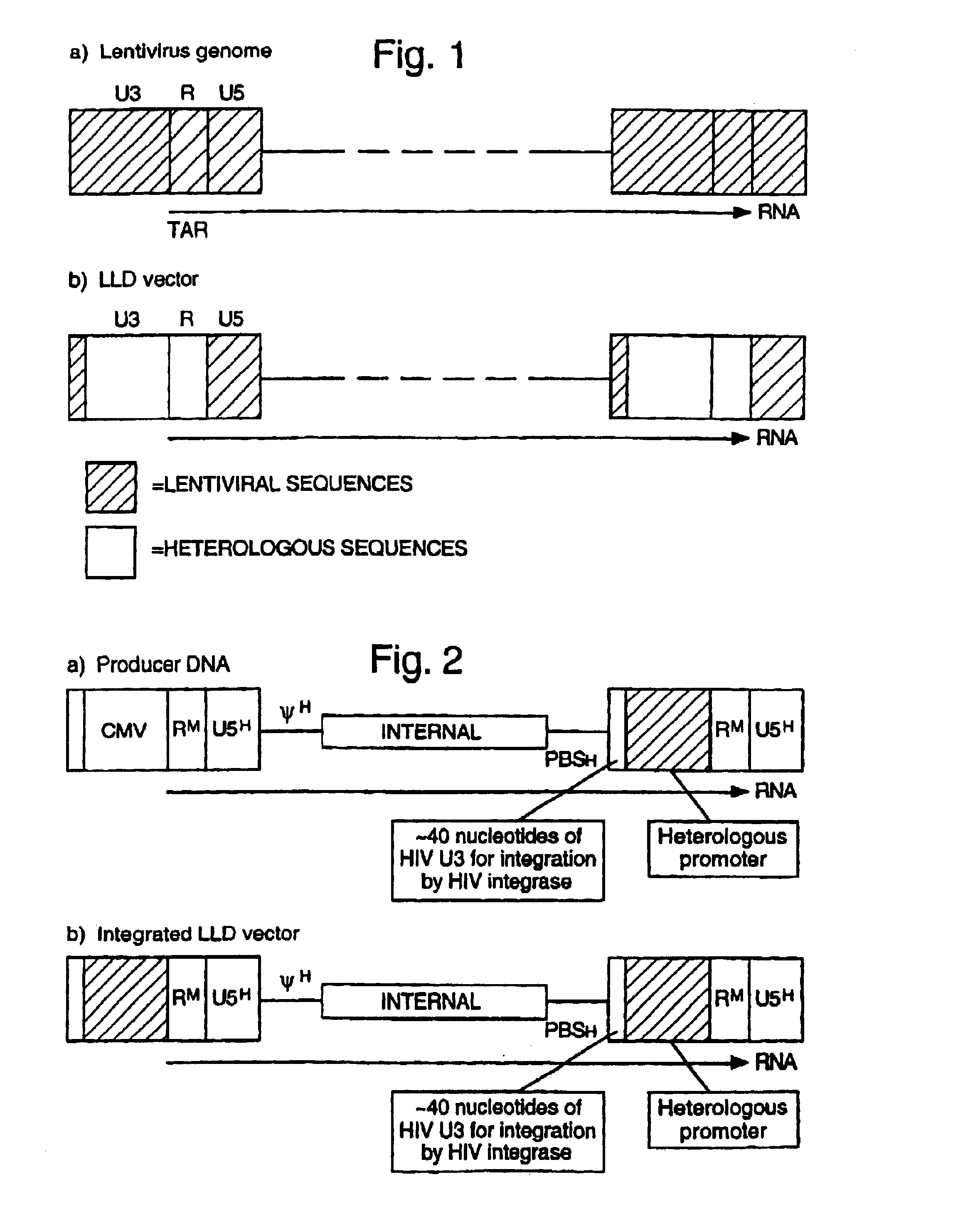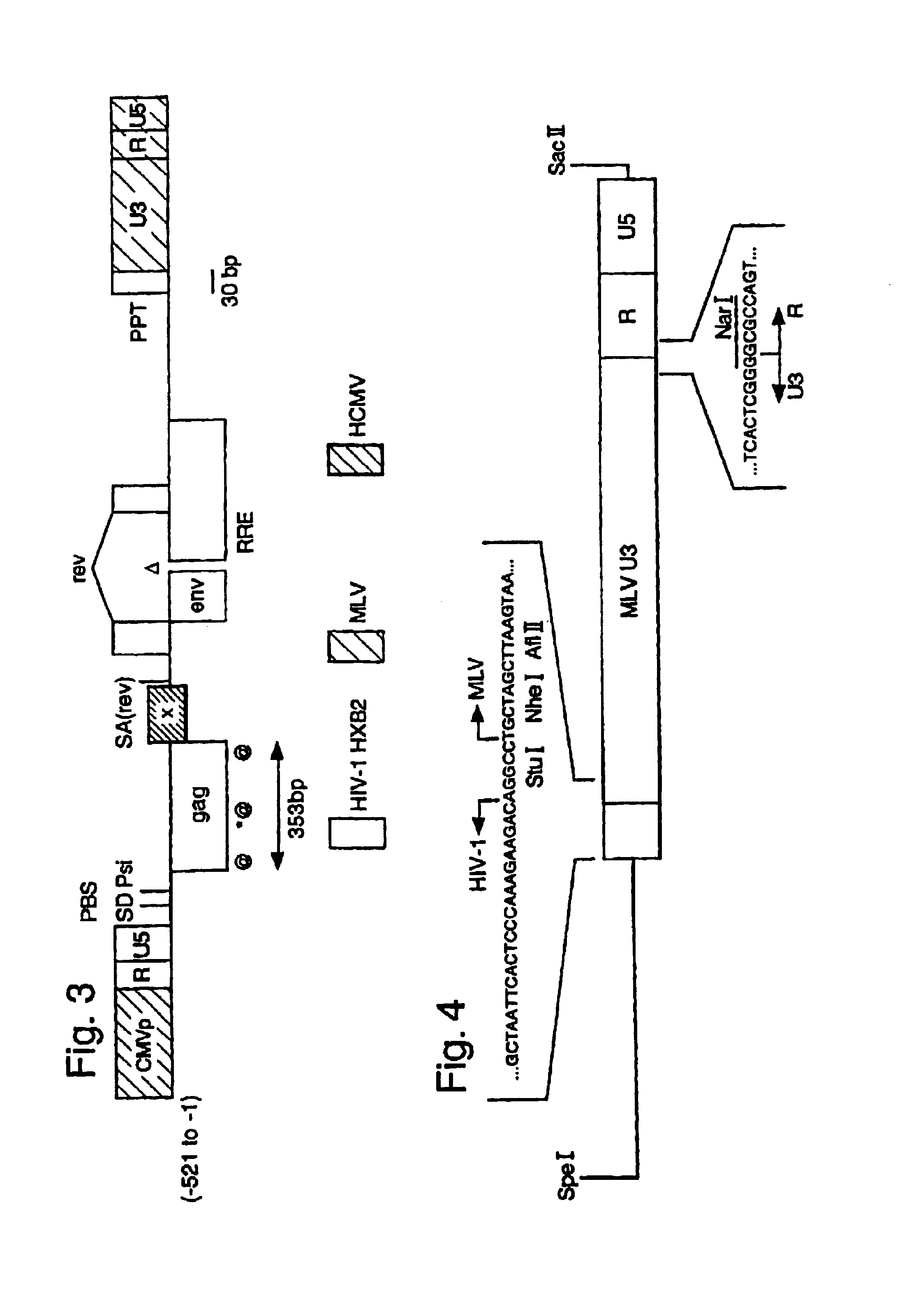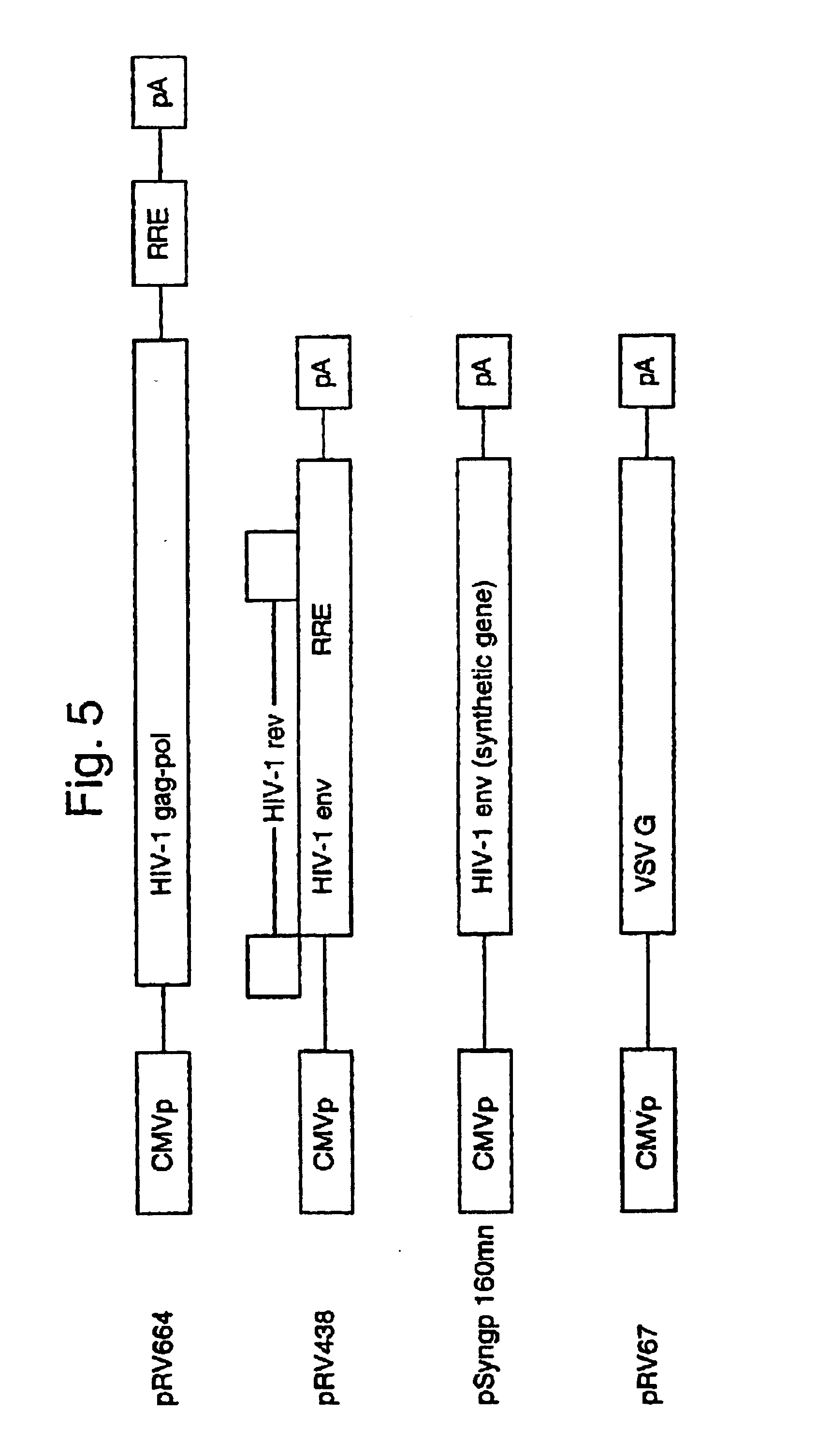Lentiviral LTR-deleted vector
- Summary
- Abstract
- Description
- Claims
- Application Information
AI Technical Summary
Benefits of technology
Problems solved by technology
Method used
Image
Examples
example 1
An HIV-Based LLD Vector with the MLV U3 Promoter and MLV R Regions
[0074]Lentiviral vectors are particularly useful for gene transfer to non-dividing cells. Amongst many important non-dividing target cells are the neurons of the human brain. These cells might be target cells for the delivery of thdd or ddth cells for the treatment of Parkinson's disease. This Example describes the construction of an HIV based vector which will deliver and express thdd or ddth genes, for example.
[0075]The structure of a general HIV LLD vector system is shown in FIG. 2. This example is shown in FIGS. 3 and 4. It is constructed as follows. the minimal requirements for HIV reverse transcription are the primer binding site (PBS) to initiate the negative strand DNA synthesis, the polypurine tract (PPT) to initiate the positive DNA synthesis, and identical 5′ and 3′ R sequences to allow the first template switch. The incorporation of the PBS and PPT from HIV-1 into the vector and the R sequences from MLV in...
example 2
Other LLD Vectors
[0094]Systems similar to that described in Example 1 can be produced from other lentiviruses. These systems avoid using HIV, with its associated perceived risks as a gene delivery system. For example constructions could be designed using sequence information from FIV (Talbott et al., 1989 PNAS 86, 5743), EIAV (Payne et al., 1994 J. Gen. Virol. 75, 425), Visna virus (Sonigo et al., 1985 Cell 42, 369; Querat et al., 1990 Virology 175, 434), BIV (Garvey et al., 1990 Virology 175, 391), CAEV (Saltarelli et al., 1990 Virology 179, 347) and SIV (Los Alamos sequence database).
example 3
Construction of TH-DD Fusion Genes Designated thdd1-4 (FIG. 7)
[0095]A human brain Substantia nigra cDNA library (Clontech. HI-3009a & b) is used as template DNA in a PCR amplification of the TH and DD cDNAs. The primers are shown in FIG. 9. In the case of the four TH cDNAs representing the HTH-1 to HTH-4 genes (Grima et al.; Kaneda et al.), they are all treated in the same way from a pool of PCR products and then identified after cloning and sequencing. The TH PCR products are produced from linkers containing a HincII site at the 5′ end of the nucleic acid and a flexible linker and HindIII site at the 3′ end. The flexible linker amino acid sequence is (Gly4-Ser)3, a sequence often used to link the two chains of an antibody to produce an scFv (e.g. Somia et al., 1995 PNAS 92, 7570). The human DD PCR product was designed to have a HindIII site at the 5′ end and a SpeI site at the 3′ end. The two fragment are ligated and the ligated products of the correct size (2.98 kb, 2.99 kb, 3.06 ...
PUM
 Login to View More
Login to View More Abstract
Description
Claims
Application Information
 Login to View More
Login to View More - R&D
- Intellectual Property
- Life Sciences
- Materials
- Tech Scout
- Unparalleled Data Quality
- Higher Quality Content
- 60% Fewer Hallucinations
Browse by: Latest US Patents, China's latest patents, Technical Efficacy Thesaurus, Application Domain, Technology Topic, Popular Technical Reports.
© 2025 PatSnap. All rights reserved.Legal|Privacy policy|Modern Slavery Act Transparency Statement|Sitemap|About US| Contact US: help@patsnap.com



